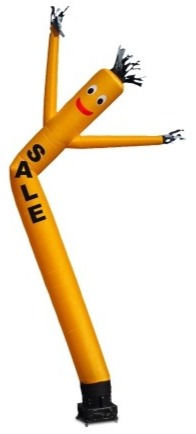The optimal javelin shape
- Harsh Bhundiya
- Dec 26, 2024
- 3 min read
The javelin throw is one of the oldest Olympic games, with its earliest recorded appearance in 708 BC, and today enjoys great popularity at the Summer Olympic games. But did you know that the shape of the javelin can be cleverly designed to maximize throwing distance?
During the 2024 Summer Olympic games in Paris, the javelin throw piqued my interest. Inspired by the prehistoric hunting of animals with spears, the sport has a simple objective: to throw the javelin the furthest. But as with everything in life, there is nuance, as the distance traveled by the javelin does not depend solely on the strength of the thrower. It actually depends on many factors, including the throw angle, the javelin spin, the javelin shape, and even the wind speed.
Today I want to talk about one of these factors: the shape of the javelin. According to official Olympics rules [1], the javelin has three parts: the shaft, the grip, and the head. The shaft is a hollow or solid cylinder that tapers down to a tip at both ends. To aid the thrower in gripping the javelin, there is a rubber grip around a small portion of the shaft. And at the front end of the javelin, there is a sharp metal tip that digs into the grass when the javelin lands. There are some specific rules that constrain the design of the javelin: the total length must be between 2.6 m and 2.7 m, the minimum weight must be 800 g, the thickness of the grip must be <0.8 mm, and the center of gravity must be between 0.9 m and 1.06 m from the tip.
With these rules, today the world record for the longest javelin throw is 98.48 m, which was set in 1996 by a Czech thrower. But what if you could vary the shape of the javelin however you like? What is the best possible shape for a javelin to achieve the maximum throw distance?

To find the optimal shape, we have to think in terms of energy. During the throw, the thrower imparts kinetic energy to the javelin by launching it at some velocity and angle. Along its parabolic trajectory, the javelin loses kinetic energy to vibrations and atmospheric drag, and gains gravitational potential energy before falling to the ground. So to design a javelin that reaches the furthest distance, one strategy is to minimize losses due to vibrations by finding a shape that vibrates the least during flight. More formally, we want to find a varying cross section profile that maximizes the lowest natural vibration frequency of the javelin. A higher natural frequency means smaller amplitude vibrations and therefore less energy lost to vibrations.
Some applied mathematicians have looked at this problem in the early 2000s [2,3] and have derived the equations that govern the optimal javelin shape:

Here u is the transverse deflection from the centerline, θ is the slope of the deflection, µ is the bending moment, v is the shear force along the beam, and V=V(1) is the total volume. These equations model the javelin as an Euler-Bernoulli beam and consider a symmetric vibration mode about its center, yielding a fourth-order nonlinear boundary value problem that the optimal profile of the cross-sectional area must satisfy. These equations are difficult to solve because they have a singularity at the javelin tip. However, with some clever math [2,3], they can be numerically solved for the optimal cross-sectional area over the javelin length. Converting the cross-sectional area to a top-down view of the javelin, we obtain the following optimal shape:
![Top-down view of optimal javelin [3]](https://static.wixstatic.com/media/325e9e_d5fe2cb4c2154de7aaa986188f73f596~mv2.jpg/v1/fill/w_980,h_25,al_c,q_80,usm_0.66_1.00_0.01,enc_avif,quality_auto/325e9e_d5fe2cb4c2154de7aaa986188f73f596~mv2.jpg)
![3D view of half the optimal javelin [3]](https://static.wixstatic.com/media/325e9e_a323ebeedadf43c6a34f18cf79b138b6~mv2.jpg/v1/fill/w_600,h_412,al_c,q_80,enc_avif,quality_auto/325e9e_a323ebeedadf43c6a34f18cf79b138b6~mv2.jpg)
So the optimal javelin is thick in the center and tapers to a sharp point along both ends. If you could manufacture such a javelin, it would likely surpass the current throwing records. And the shape is technically feasible, as nothing in the Olympics rules prevents the javelin tips from being more pointy. However, you might already see some practical issues making this javelin. Such a sharp point is difficult to manufacture and would likely break upon contact with the ground. Hence real javelins are less pointy and have a longer cylindrical portion near its center. Nonetheless, the optimal shape shows the value of having a longer tapering length.
This problem is an interesting application of beam theory and optimization for sports. What other Olympic sports do you see similar optimization? Comment below!
References/further reading:
[1] “Javelin throw rules” 2024.
[2] “The Optimal Shape of a Javelin,” 2005.
[3] “More on the Problem and the Solution of the Optimal Shape of a Javelin,” 2007.



🔥🔥🔥